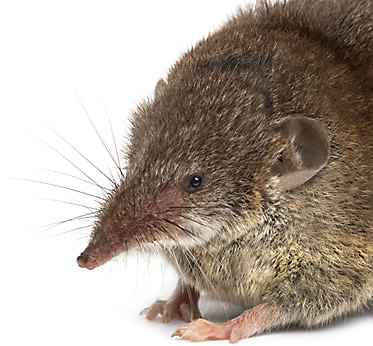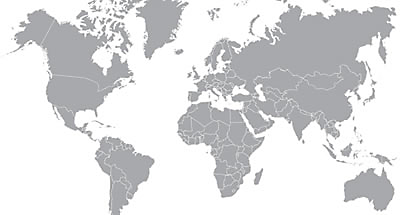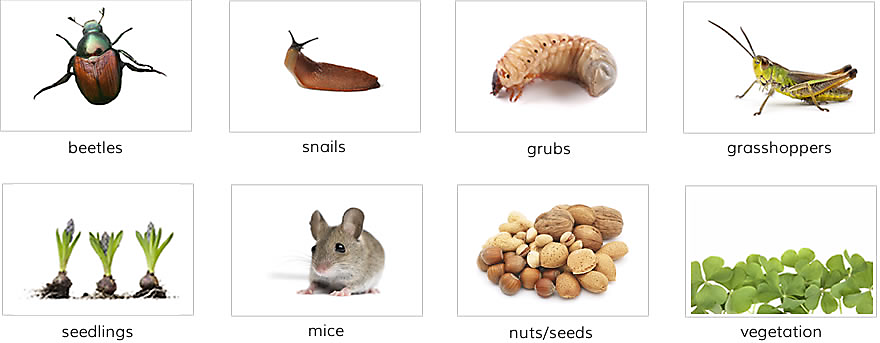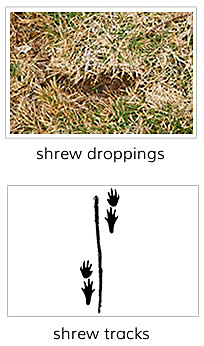





Shrews
Shrew Facts
Shrews are mammals that bear a close resemblance to mice, with the exception of their long, pointed snout. Shrews are primarily outdoor dwellers, although they’re not shy about entering homes when seeking food or shelter. Shrew damage can range from gnawing on roots and trees with their razor-sharp teeth to contaminating outdoor food sources with their feces and urine. Learn a few more interesting shrew facts below.

General Shrew Facts
- Taxonomic Family: Soricidae
- Average Size: 3-4” long with a 4” tail; 1 oz.
- Average Lifespan in the Wild: 1-2 years
- Identifying Features: oblong, rodent-like body; greyish brown fur; small head with pointed snout; small black eyes; long, hairless tail.
Shrew Geography and Habitat

Shrews are terrestrial mammals found in a wide variety of habitats, but most prefer those with plenty of ground cover for protection from predators. Some species live underground in abandoned burrows, others in gardens, tree cavities and even manmade structures like homes.
Shrew Diet
The extraordinarily high metabolism of shrews requires them to consume as much as 3 times their body weight each day. They eat every 3-4 hours to maintain energy and body heat. Shrews are insectivores that mainly consume small invertibrate; however, they are also known to prey on small mammals and vegetable matter.
Some favorite foods include:

Shrew Behavior
- Activity: A shrew’s activity cycle depends on its species and habitat. Some shrews are nocturnal, while some are diurnal, and those living in colder climates may enter a state of torpor in the winter.
- Reproduction: Shrews reproduce 1-3 times per year, typically in warmer months. After a gestation period of about 21 days, a female shrew will give birth to 2-10 young.
- Social Interaction: When they’re not breeding, shrews are solitary animals that live and forage alone. They’re extremely territorial and aggressive against other shrews, animals and even people.
- Echolocation: Some species of shrews are the only known terrestrial mammals with the ability to echolocate. Unlike bats and some aquatic animals that use echolocation to locate food, shrews are believed to only use this ability to get a sense of their territory.
Identify Shrew Damage

Shrews are relatively indestructive, but they can cause some damage when they get into your home. Some common signs of shrews and their damage include:
- Shrew droppings: small, dark-colored and corkscrew-shaped
- Pungent odor in or around home
- Pilfered plant seeds or bird seeds
- Small tunnels in grass, sometimes leading to a burrow entrance hole
- Shrew tracks: small, barely visible tracks in sand or dirt with 5 toes on the front and hind feet; front and back feet often overlap; tail mark may show in between
Fun Facts
- Shrews are considered the 4th most successful mammalian family in the world.
- In the winter, shrews may lose up to 40% of their bodyweight, shrinking down to the size of their skeleton and organs.
- The pygmy shrew is the smallest mammal in North America and the second-smallest in the entire world.
- Shrews do not create underground tunnels, but instead use those created by moles and other burrowing species to forage under the earth’s surface.
- Foul-smelling secretions from special scent glands help protect shrews from predation. An animal may even kill a shrew only to refrain from eating it because of the strong odor.
- Two species of shrews are venomous: the Eurasian water shrew and the short-tail shrew. These shrew species release venom from grooves in their teeth to paralyze small prey.
